Rhinoplasty Swelling Stages: What to Expect
Rhinoplasty is major surgery that will require significant downtime. Although the majority of the healing process will take place within the first few days and weeks, small amounts of swelling may continue to persist for up to one year. Every nose job is different, and every patient will heal at their own pace.
The best way you can ensure a good recovery after a nose job with Dr. Miller is to carefully follow all of his pre- and post-op instructions. As a double-board certified facial plastic surgeon and expert in rhinoplasty, Dr. Miller has performed thousands of rhinoplasty procedures. He has developed a surgical plan to keep swelling to a minimum and produce the best possible results for his patients.
Rhinoplasty recovery will depend on several factors, including the patient’s skin texture and the surgical technique used. Revision procedures tend to have a longer recovery than the initial surgery. No matter what your surgery looks like, swelling is to be expected, and the recovery process will typically follow the same basic structure.
What to Expect 1 Week Post-Rhinoplasty
You will want to give yourself plenty of time for rest and recovery during the first week after your surgery. Expect significant swelling for the first few days. Your nose will also be tender and you may have difficulty breathing through the nose during this time. You will likely be wearing a splint and nasal dressings for about a week. You may notice bruising around the eyes, cheeks, and lips, and puffiness at the nasal tip. It is also common to notice uneven swelling and asymmetry during this early part of your recovery.
Rhinoplasty recovery week by week
Week 2: At this point, there will be a significant reduction in post-op swelling. Any remaining bruising can be easily concealed with makeup. You will notice as more of the swelling recedes, the new shape of your nose becomes more distinguishable. By the end of the second week, you may return to work if your job is not too strenuous. Intense and demanding activities should be avoided for up to 6 weeks.
Week 3-4: By this time, there should be a dramatic reduction in swelling, and almost all visible signs of surgery should be gone. Your new nose will be more defined and you will start to appreciate your rhinoplasty results. You may also be cleared for moderate exercise. If you had revision rhinoplasty or if you have unusually thick skin, you may still have quite a bit of swelling at this stage of recovery.
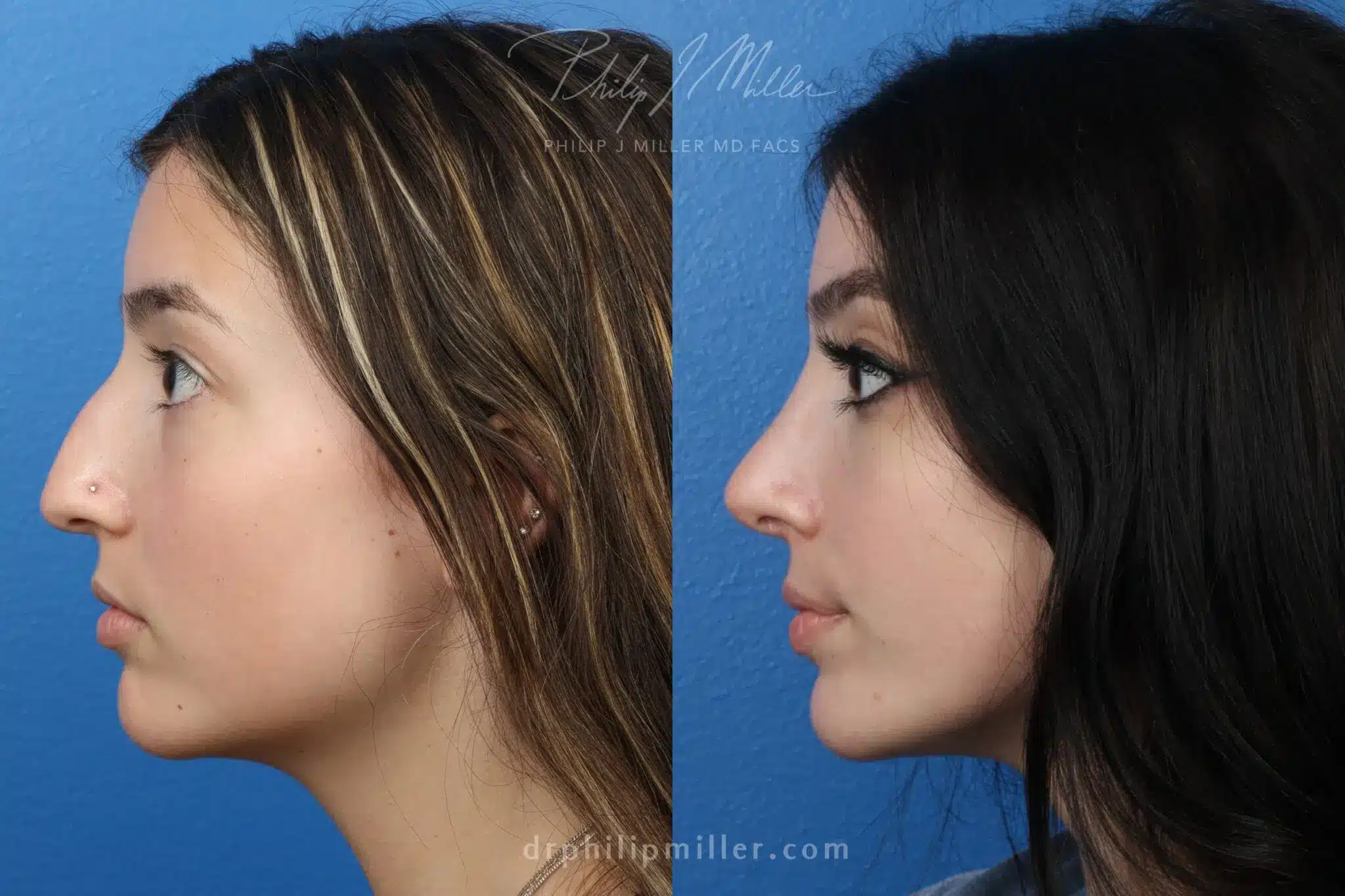
Months 2-3: As your nose continues to heal and swelling subsides even more, you will begin to see your full results and feel ready to show off your new nose. Keep in mind that it can take a year for all of the swelling to go down, however. During this time, your bone structure is more stable, enabling you to wear glasses and resume weight-bearing exercises.
Months 3-6: Any numbness or prickling sensations on the skin or inside your nose should begin to resolve at this point of the recovery process.
Months 6-12: Within a year, you will see the final results of your rhinoplasty procedure. With only minimal to no swelling, changes in the nose during this time will be subtle. The repositioned cartilage will have fully conformed to its new shape and the nasal tip should appear more refined.
There are factors that may impact your recovery timeline. These include skin texture and thickness, revision surgery, or extensive nasal reconstruction. During your consultation with Dr. Miller, he’ll be able to clearly discuss what recovery process to expect for your particular rhinoplasty procedure. He’ll also provide you with a set of post-operative care instructions, as well as recommendations for reducing swelling. Dr. Miller and his team will follow you through this entire process, but please be patient to see the final results.
Tips to Reduce Rhinoplasty Swelling
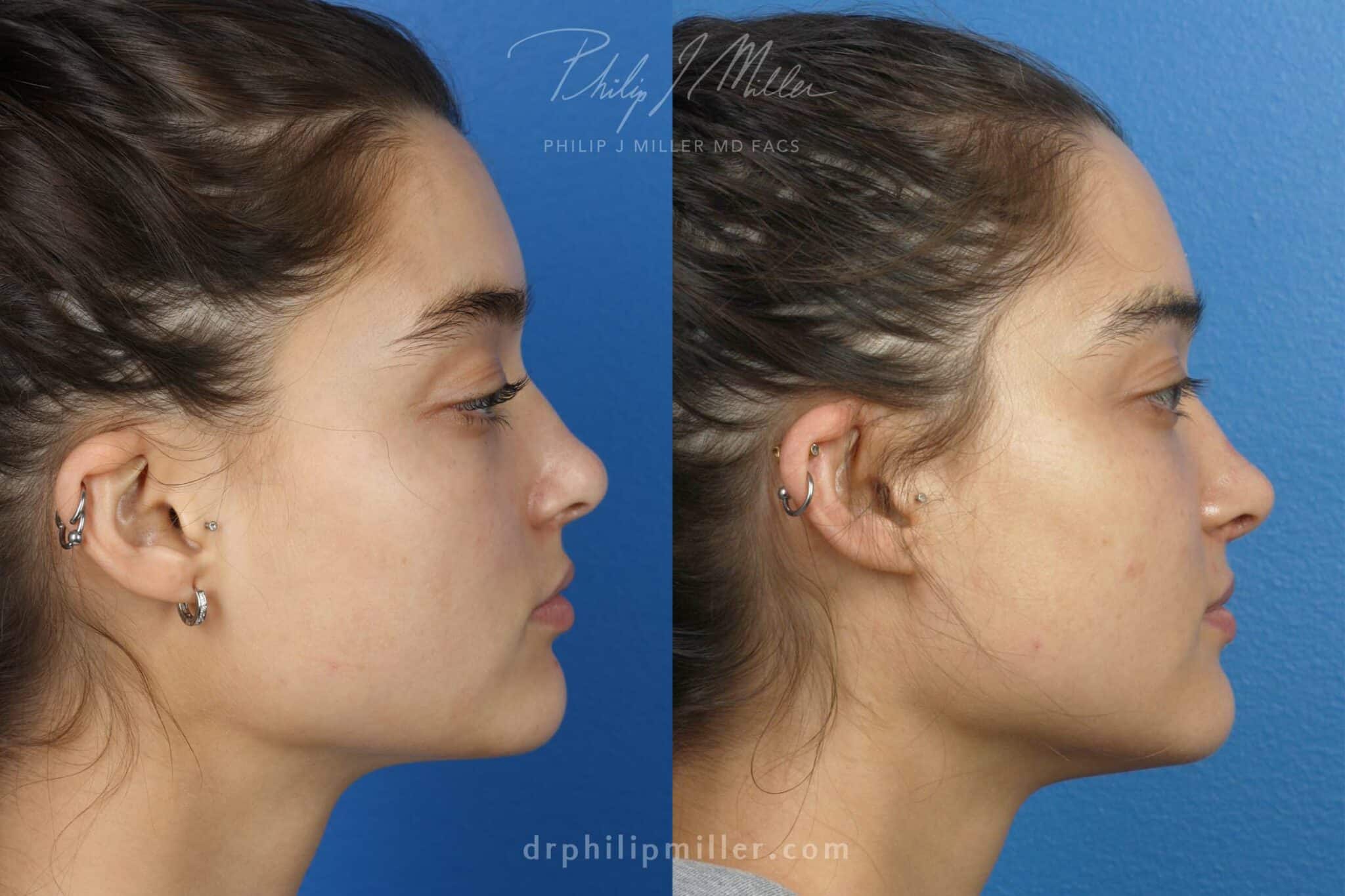
The best thing you can do as a patient is to follow all the after-care instructions provided by your surgeon. This ensures a smooth recovery free of any complications. Here are some recommendations to help reduce post-operative swelling and speed up your healing process, enabling you to see your full results sooner.
- Avoid sleeping on your side or belly. Sleeping on your back in an elevated position (propped on several pillows) is the best sleeping position. This will minimize fluid buildup, congestion, and discomfort.
- Stay hydrated by drinking lots of fluids. This will help reduce swelling by preventing fluid retention.
- Avoid salty foods which will increase the amount of fluid in your body and in turn result in more swelling due to water retention.
- Eat healthy foods like fruits, vegetables, and proteins that will promote wound healing (e.g., berries, leafy greens, beans, nuts and seeds, and poultry).
- Help the swelling subside by using cool compresses and ice packs around your nose. Do not apply ice directly on the skin. Prevent ice burns by wrapping an ice bag with a towel before application.
- Avoid hot baths and showers while you are still wearing a cast. Steam can worsen swelling and may even cause your cast to fall off.
- Avoid strenuous activities for at least 3-6 weeks, as these can increase blood flow and swelling.
- Avoid smoking which slows down the healing process and increases the risk of post-surgery complications.
- Avoid taking blood-thinning medications that can affect bleeding and impair healing.
Choosing Your Rhinoplasty Surgeon in New York City
For something as invasive as plastic surgery, choose a surgeon who will not only achieve your desired results based on your unique needs and goals, but someone who can provide the support and care you need before, during, and after your procedure.
As a board-certified facial plastic surgeon, Dr. Miller specializes in cosmetic facial procedures that are designed to help patients achieve their aesthetic goals. Dr. Miller creates innovative and comprehensive procedure plans in order to provide natural-looking results and outcomes that are life-changing. Considered one of the country’s leading experts in rhinoplasty and facial rejuvenation, Dr. Miller and his highly acclaimed team are proud to offer patients the highest level of care and customized treatments in Manhattan, New York, and New Orleans, Louisiana.
Dr. Miller’s approach to rhinoplasty encompasses the NatraLook® process that optimizes the patient’s overall experience by ensuring their journey yields the most rewarding results. It is NatraLook’s goal to help patients feel empowered before and after their surgery. During your NatraLook consultation, Dr. Miller evaluates your nose and facial features while listening to your concerns and goals. This process expands the typical plastic surgery experience into a safe, collaborative environment where you can explore your Aesthetic Confidence®.
Contact Dr. Miller to schedule a consultation and learn how his artistic skill and experience can bring balance to your features and help you achieve the best version of yourself.
3 Types of Facelifts You Need to Know About
Gone are the days when you would undergo surgery in hopes of restoring your youth, only to find your face looking like “done” after your procedure. Thanks to advanced, state-of-the-art technology and techniques, today’s plastic surgery combines science and art to create a natural, youthful appearance in both men and women.
Philip J. Miller, MD, FACS, is a double board-certified facial plastic surgeon who is known for creating natural results through customized treatment plans. He performs facelifts for patients with all degrees of aging, from the earliest fine lines and wrinkles to significant sagging and volume loss. With three basic types of facelifts, Dr. Miller will utilize his proprietary NatraLook® process to ensure you achieve the Aesthetic Confidence® you deserve when you look your very best.
3 Types of Facelifts
As the name suggests, a facelift is a procedure designed to lift and smooth the face to create a more youthful appearance. Also known as a rhytidectomy, they are appropriate for men and women of all ages, since Dr. Miller will tailor your treatment to your precise concerns and goals. There are three basic types of facelifts Dr. Miller offers in his New York and New Orleans offices.
Deep Plane Facelift
A deep plane facelift is the top choice for patients with significant aging symptoms. Deep plane facelifts reposition the muscle and soft tissue layer, or SMAS, before tightening the skin. This technique provides a more natural result than facelifts past that focused solely on skin tightening.
Deep plane facelifts enhance both the jowls and neck areas, but also let go of the cheek ligaments and raise the cheek fat pads and muscles. During a deep plane facelift, the skin and the SMAS are lifted together, rather than separately, which also creates more natural-looking results.
A deep plane facelift involves incisions behind and around the ears and along the hairline at the temples. Through these incisions, Dr. Miller can access the areas necessary to produce the most dramatic improvement. Surgery is performed using general anesthesia and takes about four hours to complete. Recovery from a deep plane facelift is typically 10-14 days.
Mini Facelift
Known as the “S-lift”, “weekend facelift”, and the “lunchtime facelift,” mini facelifts are quickly becoming a popular option in surgical facelifts. Less dramatic than a deep plane facelift, a mini facelift offers you a refreshed look by suspending the SMAS facial muscle.
Especially useful for the cheek and jowl areas, a mini facelift requires smaller incisions and a shorter recovery for most patients. The procedure may be performed using local anesthesia or IV sedation, rather than general anesthesia.
This type of plastic surgery is good for people who want to correct sagging cheeks, skin laxity in the jawline, midface sagging, marionette lines, jowls, and double chins. The improvements are not as dramatic as a deep plane facelift and typically don’t last as long. However, a mini facelift is an excellent choice for patients with earlier signs of aging that would like to refresh their appearance.
Liquid (Nonsurgical) Facelift
Nonsurgical, liquid facelifts involve a combination of injectable neuromodulators and dermal fillers to produce comprehensive improvement without anesthesia, incisions, or downtime. Neuromodulators like Botox® Cosmetic and Dysport® relax facial muscles that cause wrinkles to form in the forehead and around the eyes. Hyaluronic acid dermal fillers like Juvéderm® or Restylane® restore lost volume in the midface and along the jawline, while smoothing away wrinkles around the nose and mouth.
Results from a liquid facelift can be seen almost immediately, although slight swelling around the injection areas may interfere with your final results for a day or two. A liquid facelift is an excellent option for patients experiencing the earliest signs of aging or those who are not good candidates for surgical procedures.
What is the best type of facelift?
The best facelift for you is the one that meets your specific needs and goals. Dr. Miller will work with you to understand your concerns and create a customized plan to produce an optimal outcome for you. He will also take into account your medical history and current conditions to ensure the procedure you choose will be both safe and effective.
What is the most natural-looking facelift?
The most natural-looking facelift will be the one that is performed by an experienced facial plastic surgeon. Dr. Miller has the experience and expertise to ensure your results look natural no matter what type of procedure you choose. You can rest assured you won’t come out of your surgery with the typical windblow look of facelifts past. Instead, you will simply look like a better, more youthful version of yourself.
What is the best facelift without surgery?
Although there are radiofrequency (RF) and ultrasound therapies that effectively tighten and smooth the skin, the liquid facelift offers the ability to restore volume while treating fine lines and wrinkles. With minimal downtime, this procedure offers a quick fix for early signs of aging. Keep in mind that liquid facelifts produce temporary results and procedures will need to be repeated every few months to maintain your refreshed appearance.
Which facelift lasts the longest?
The deep plane facelift lasts up to 10 years, making it the facelift that lasts the longest. A mini facelift usually lasts around 5-8 years, depending on how well you care for your skin. Liquid facelifts must be repeated every year to maintain the positive results.
At your initial consultation, Dr. Miller will discuss the different types of facelifts available and help you choose the best option for you based on your specific needs and goals.If you are interested in learning more about facelifts or would like to schedule an appointment, contact our office in Manhattan, New York or New Orleans, Louisiana today.
Facelift vs. Neck Lift
Looking your best usually starts with your face – It is the first thing people notice. A new aesthetic appearance can open doors for you, making you look and feel your very best. Though you may not have found the Fountain of Youth yet, even with the many moisturizers and creams available today, a facelift, neck lift, or combination of the two may be the solution you are looking for to get your youthful facial appearance back.
Philip Miller, M.D. is our double board-certified facial plastic surgeon with 20 years of experience delivering safe and effective facelifts and neck lifts. He creates customized treatment plans for each patient he sees. And his caring and supportive medical team are always available to answer questions and help you decide which procedure is the right one. Contact us in New York or New Orleans to learn more.
What is a Facelift?
Popular in New York and across the globe, a facelift is a plastic surgery procedure that repositions fallen tissue and excises loose, excess skin. Explicitly used for saggy skin, facial hollowing, and deep wrinkles, facelifts today are more natural-looking than the windblown results these surgeries used to offer.
Weakened muscle and tissue, combined with collagen depletion in the dermal structure, can cause the skin to sag over time. The tissue under the muscle, the superficial musculoaponeurotic system (SMAS), can be tightened and lifted. Loose skin can be placed back over the face with the excess skin removed, promoting a more aesthetically-pleasing appearance.
In addition, Dr. Miller can reposition and remove any displaced fat that migrated downward to create a more youthful facial contour. Finally, the facelift procedure reduces the sagging or skin folds on the cheeks and jawline and other shape changes in the face that happens with age. A classic facelift focuses on the lower portion of the face, from the cheekbones down, as well as the jowls and jawline.
Dr. Miller offers customized treatment plans in his Manhattan, New York, and New Orleans, Louisiana offices to improve and enhance the appearance of your face. His proprietary NatraLook® process enables you to work through potential obstacles as you explore your Aesthetic Confidence in an unintimidating, supportive environment.
What is Neck Lift?
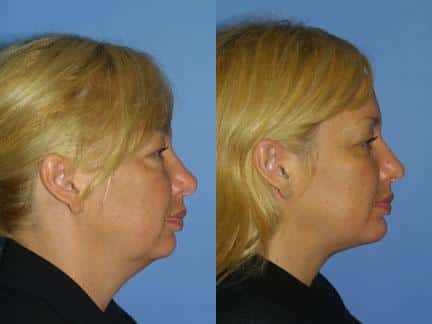
A neck lift is also known as a cervicoplasty, which targets loose, excess skin. It is often combined with a platysmaplasty that tightens the underlying neck muscle. A neck lift is a surgical procedure that removes extra skin and fat from the neck to reduce the visible signs of aging around the neck and jawline to create a smoother contour and more aesthetically pleasing profile. Dr. Miller may use a cervicoplasty, a platysmaplasty, or a combination, to rejuvenate, restore, and create a more refined appearance to the neck.
A neck lift is perfect for those who see most of their aging concerns settling beneath the jawline, such as horizontal banding, submental fat under the chin, and the dreaded “turkey neck.” Neck lift procedures take about two to three hours and can be done using local anesthesia or IV sedation for some patients. Results of a good neck lift can last many years if you give your skin TLC with daily sun protection and medical-grade skincare products that maintain skin health..
Are a facelift and neck lift the same?
A facelift and neck lift are two different procedures, although it may be necessary to perform a lower facelift to firm up the jawline with a neck lift to tighten the sagging skin under the chin. A facelift primarily focuses on loss of volume in the midface, jowl formation along the jawline, and creases around the nose and mouth. A neck lift targets loose skin below the jawline, submental fat under the chin, the formation of turkey neck, and horizontal banding that often occurs when the platysma muscle becomes overactive.
Dr. Miller will take the time to discover your specific concerns and goals to determine which procedure or combination of treatments might work best for you.
What’s the difference between a neck lift and a lower facelift?
Depending on the type of facelift performed, this procedure can refresh most of the face in a single procedure. A neck lift is focused solely on the neck, from the jawline to the decollete. Incisions for a facelift are usually placed around the ear and inside the hairline toward the temple. Incisions for a neck lift can also be placed around the ear, but extend across the lower scalp. Recovery from these procedures can be similar, taking about 1-2 weeks.
Can a neck lift be done without a facelift?
Occasionally, a patient can get a nice result from a neck lift alone. However, it is much more common to combine a neck lift with a facelift to ensure comprehensive improvement. A facelift is more likely to produce a satisfactory outcome when performed as a stand-alone treatment.
Does a facelift tighten the neck?
Although it primarily focuses on improving the cheeks and jawline, a facelift may tighten the neck by reducing skinfolds and sagging skin. However, for the best improvement in both areas, Dr. Miller will likely recommend performing a facelift and neck lift at the same time.
Skinfolds and sagging skin can make you feel unattractive and old. Getting a facelift, neck lift, or even both may help bring your youthful appearance back, giving you confidence and rejuvenation. Contact our Manhattan, New York, or New Orleans, Louisiana office today to make an appointment or ask questions about getting a facelift, neck lift, or both.
What are the best procedures for neck tightening in 2025?
With the abundance of neck tightening procedures available, choosing the most effective option can be a daunting task. From non-invasive techniques to minimally invasive surgeries, these varied procedures offer solutions for different skin types and aging concerns.
In this article, we explore the best neck tightening procedures available in 2025, focusing on their effectiveness, safety, and suitability to help you make a well-informed decision in your pursuit of a youthful and firm neckline.
Best Non-surgical Neck Tightening Procedures to Book in 2025
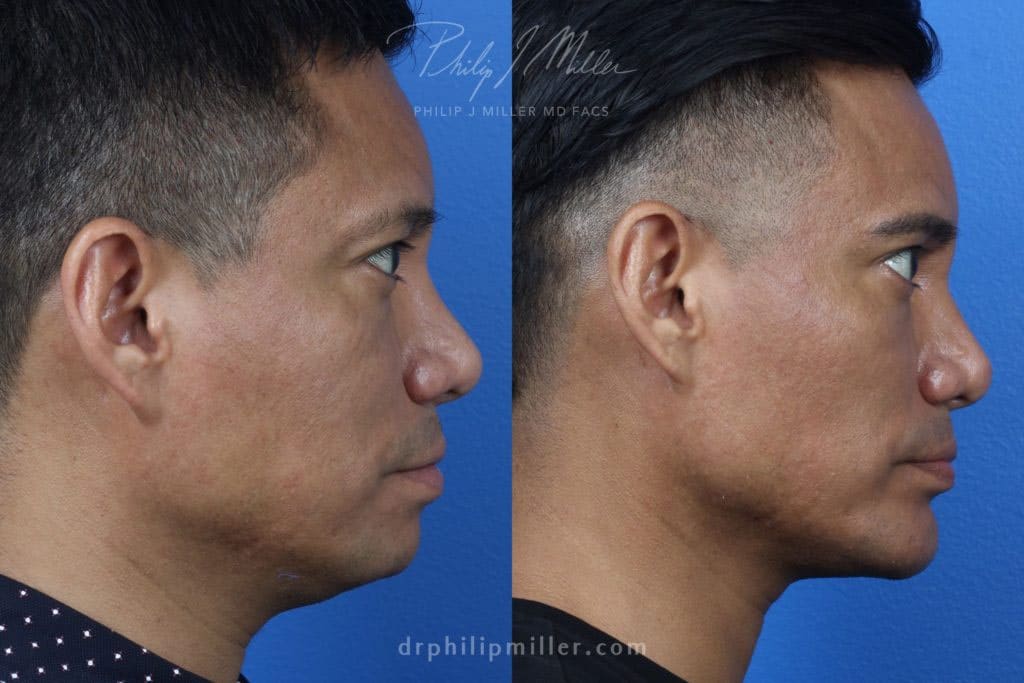
Non-surgical procedures are great options for patients seeking minimally-invasive treatments with maximum results. A non-surgical neck tightening procedure can be an especially effective option for patients with laxity and crepey skin texture.
Dr. Miller offers NeckTite™, a minimally-invasive procedure that uses patented radiofrequency assisted lipolysis technology to tighten the neck and jowls. NeckTite™ is completed with small cannulas for minimal scarring and downtime. It creates better results than liposuction and is an effective alternative to a surgical neck lift. The NeckTite™ device can contour the neck area for firmer, younger-looking skin and is ideal for patients with:
- Loose or sagging neck skin
- Jowls
- “Turkey neck”
Best Surgical Neck Tightening Procedures to Schedule in 2025
The neck is one of the first areas where signs of aging appear, and over time, wrinkles, lines, and skin texture will become more pronounced. It’s important to remember the neck area when you have facial rejuvenation procedures to make your appearance cohesive. A neck lift can remove excess fat and skin from the neck to create a smoother, more contoured look. It is a surgical procedure known as cervicoplasty (removes excess skin) or platysmaplasty (tightens loose neck muscles).
A cervicoplasty is the general name for a neck lift, while a platysmaplasty is part of the cervicoplasty. The cervicoplasty:
- Removes excess skin
- Makes an incision to reduce loose skin and contour the neck
The platysmaplasty:
- Tightens loose neck muscles
- Contours the neck
- Can be performed without a complete cervicoplasty
Dr. Miller performs neck lift surgeries in his Manhattan outpatient office, where he offers anesthesia or IV sedation to ensure a comfortable experience. The procedure takes 2-3 hours, and after surgery, patients see significant results and younger-looking skin. Patients looking for stunning results to turn back time can expect a neck lift to treat:
- Excess fat, jowls, or double chin
- Loose or sagging skin
- Wrinkles, lines, and creases
- Irregular contours
Adding Jaw Contouring
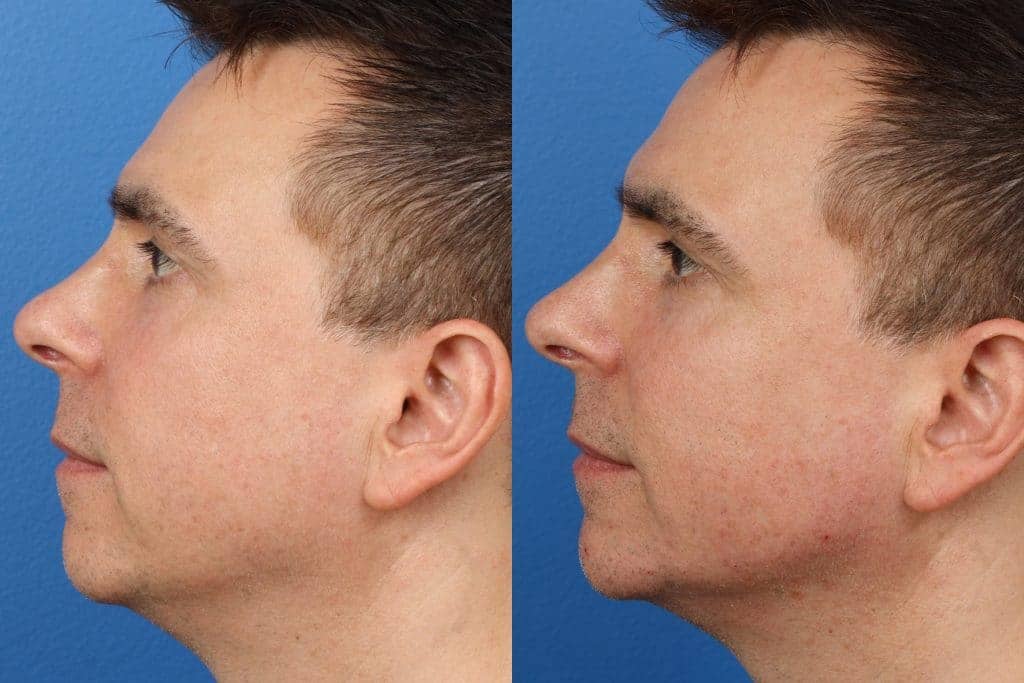
While healthy lifestyle choices such as diet, exercise, and a skincare regimen can help nurture healthy, toned skin, these habits are not effective in creating a strong facial profile. Dr. Miller’s proprietary procedure, G.I. Jawline, is a cosmetic procedure for men that creates a chiseled jawline. His proprietary procedure helps men get the classic look they desire with a sharp jawline, square chin, and a strong masculine facial contour. Dr. Miller from NYC focuses on enhancing existing features by outlining and highlighting the jawline structure.
The G.I. Jawline can include any one or combination of these treatments:
- Facial injectables: Injectables can target fine lines, wrinkles, and volume to create smooth skin, improve definition and enhance chin projection.
- Kybella®: This FDA-approved injectable treatment targets submental chin fat.
- Liposuction: This body-shaping procedure dissolves undesirable fat from hard to target areas, including submental fat under the chin.
- Neck-Tite™: This minimally-invasive procedure uses radiofrequency energy to melt fat and rejuvenate the neck and jowls.
- Medical grade implants: Implants are a permanent solution and are used to create facial balance and contour.
And The Best Procedure for Neck Tightening in 2025 Is…
…unique to you! Each patient has a unique look, facial structure, and cosmetic preference. Dr. Miller works closely with patients to identify their needs and the most effective solution to meet those needs. He customizes neck tightening treatments based on your goals to make the results stunning and natural.
Want beautiful, flawless results? The key is a personalized treatment plan with a focus on natural beauty. Dr. Miller wants patients to feel empowered to explore their Aesthetic Confidence® with a supportive experience. He uses the NatraLook® process, which evaluates and expands the plastic surgery experience into a safe opportunity to discuss personal obstacles and improve confidence.
Schedule Your Neck Tightening Treatment in New York Today
Dr. Miller works closely with patients to create a unified vision and personalized treatment plan. His extensive experience, innovative approaches, and advanced technology allow him to achieve unparalleled, life-changing results.
Contact us to schedule a consultation and learn more about neck tightening procedures that are right for you.
Can Rhinoplasty Make Your Nose Smaller?
As the center point of your face, your nose plays a significant role in creating your facial symmetry.
If you’re unhappy with your nose’s size, width, profile, or nostril size, nose surgery can help bring it into harmony with your other facial features. Rhinoplasty can change the shape and size of the nose to achieve your aesthetic goals.
For optimal results, it’s essential to consult with a board-certified plastic surgeon who specializes in rhinoplasty procedures. Reduction rhinoplasty, or nose reduction, is one of the most common procedures performed by top New York City facial plastic surgeon, Dr. Philip J. Miller. As a double board-certified facial plastic surgeon, Dr. Miller has the expertise, skill, and technique to create the best possible result for you.
How to Make Your Nose Smaller with a Surgical Nose Job
Augment the Nasal Tip
Sometimes a nasal tip adjustment is all that is needed to make the nose appear more proportionate. For instance, a large nasal tip can cause your nose to look more prominent. Dr. Miller will use specialized methods to alter the cartilage, improving your nasal tip’s projection, shape, or rotation.
Reduce the Bridge of the Nose
In other cases, the nasal bridge is the cause of a disproportionate appearance. If the bridge of your nose is out of proportion to the rest of your facial features, Dr. Miller can reduce the nasal bridge to bring it into balance.
Adjust the Size of Your Nostrils
The ideal nose is triangular, with proportionately-sized, symmetrical nostrils. When the nostrils are too large or wide, they draw attention away from your other facial features. In these cases, your appearance can be dramatically altered simply by manipulating the appearance and shape of the nostrils.
During a nostril reduction, Dr. Miller excises portions of the surrounding tissue via incisions below or inside the nose to reduce nostril size. As a result, scarring is minimal to non-existent.
A Rhinoplasty Procedure at Our Plastic Surgery Clinic
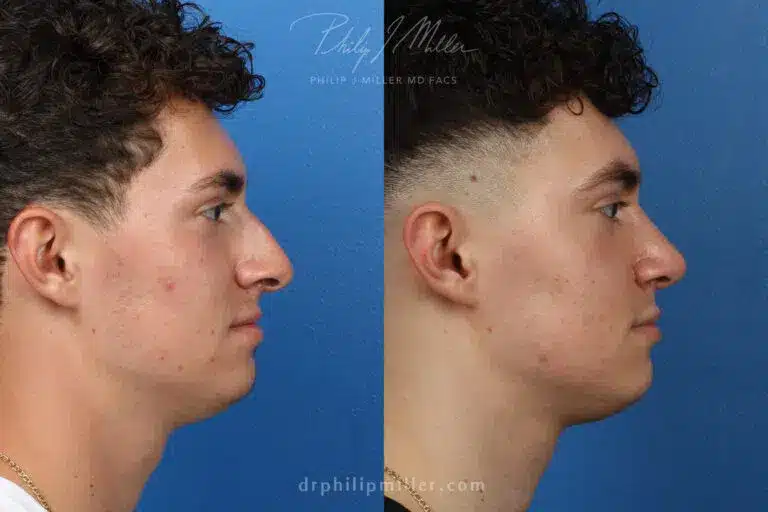
Before any nose surgery, you’ll consult with Dr. Miller at his New York City, NY plastic surgery clinic. He’ll assess the size, structure, and general condition of your nose and discuss your specific concerns and aesthetic goals.
Are you a candidate for a rhinoplasty?
For any elective surgery, good candidates should be healthy and have realistic expectations for improvement.
Nose surgery can be performed when the face and nose have reached full development—around age 16 for females and 17 for males. Rhinoplasty is not recommended for patients younger than this, as the nose can continue to change until this age.
Older people can benefit from rhinoplasty as well. As we age, our nose may begin to look longer, and the tip of the nose may start to droop. A nose job can correct these age-related changes for a more youthful appearance. In fact, it’s common to combine rhinoplasty with a facelift, eyelid surgery, or other anti-aging procedures.
Additional Benefits of Rhinoplasty
In addition to creating dramatic improvements in your appearance and self-confidence, rhinoplasty can correct functional issues of the nose you may not even know you have.
Some people have nasal passages that are too narrow for air to pass through freely. Treating this issue may involve removing tissue to open more space and facilitate easier breathing.
A deviated septum is another common functional problem, which can occur because of injury or accident. It’s also possible that the septum simply grew in a crooked manner. Since a deviated septum usually produces no external visual signs, most people are unaware they have this condition. For others, the deviation causes snoring, sinusitis, breathing difficulties, sleep apnea, and respiratory complaints. Visit mayoclinic.org to learn more about deviated septum symptoms and causes.
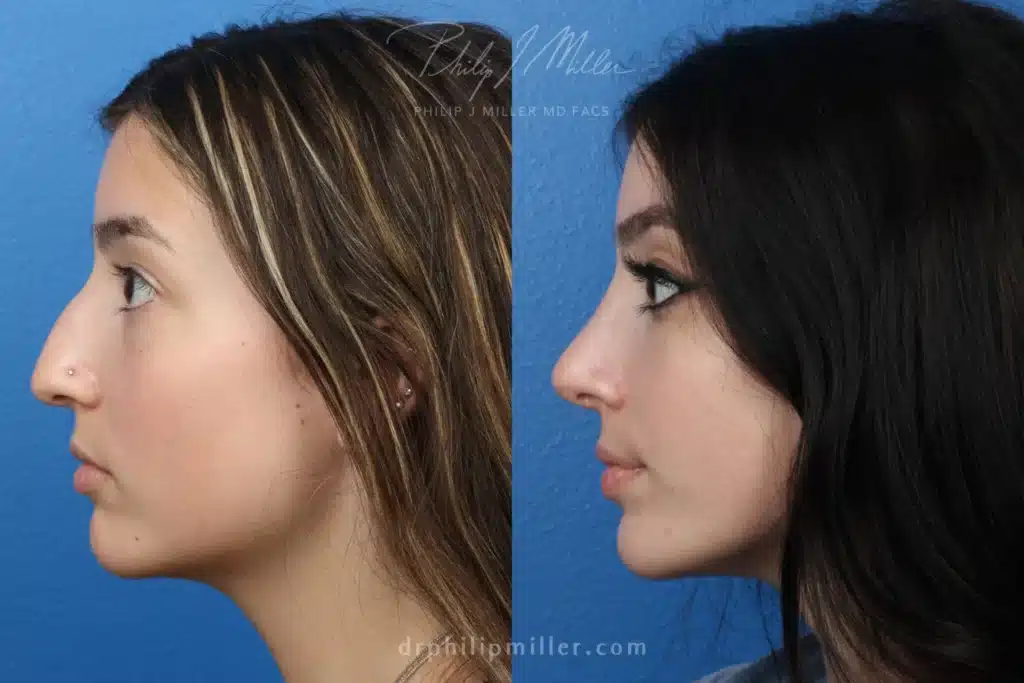
When you decide to have rhinoplasty surgery, this is also the time to address any breathing problems you may have noticed. Before performing your nose surgery, Dr. Miller will examine the nose to identify any functional issues. He will then create a surgical plan that addresses both the appearance and function of the nose.
Non-Surgical Alternatives
DIY Home Remedies
A search of the internet reveals a few methods for “DIY” nose jobs.
For instance, certain websites proclaim that nose exercises are an easy way to reshape the nose. Other suggested remedies involve applying toothpaste, apple cider vinegar, ginger, or garlic to reduce a large nose.
The shape of your nose where it attaches to your face is determined mainly by bone shape, and the tip of your nose is shaped primarily by cartilage. There’s no credible evidence to suggest that any DIY home remedy can influence the size or shape of the nose.
Unreliable advice abounds on the internet, and it’s always best to see a board-certified facial plastic surgeon for trustworthy recommendations based on expertise, not internet rumors.
Makeup
Makeup can’t change the size or shape of your nose, but it can help alter its appearance. Contouring is a popular way to create the illusion of a smaller, thinner, or reshaped nose:
- Using a bronzer two shades darker than your skin, outline both sides of your nose.
- Highlight the bridge of your nose with a matte highlighter.
- With a makeup sponge, manipulate the shadows and highlights to achieve the desired effect.
Many online tutorials demonstrate techniques for nose contouring depending on the effect you want to achieve.
Injectable Options
If you’re dissatisfied with your nose because of hollows, depressions, or asymmetry that affect its overall appearance, you may want to consider non-surgical rhinoplasty.
A non-surgical nose job makes subtle changes to the shape of the nose using injectable fillers, allowing surgeons to change the nasal tip’s shape, size, and position, straighten the nose, and even hide bumps. Non-surgical nose jobs are safe and effective, offering immediate results with exceptionally short recovery time.
These procedures do have limitations, however. The results aren’t permanent, typically lasting between 8-24 months. Non-surgical nose jobs can’t reduce the size of the nose and are best suited for making subtle changes.
Reduce the Size of Your Nose Permanently with Rhinoplasty in NYC
If you’ve been considering surgery to reduce the size of your nose, we invite you to schedule a consultation with Dr. Miller. He’ll help guide you through each step of your procedure from his state-of-the-art Manhattan plastic surgery clinic and surgical suite—one of the premier centers in New York City.
Popular Plastic Surgery Procedures: A look at the Real Housewives
Plastic surgery helps individuals achieve the aesthetic beauty and confidence they desire. Bravo’s Real Housewives are open about and supportive of plastic surgery to enhance or change facial and body features. The women had a wide range of treatments in 2021 and spoke candidly on their shows and social media platforms.
Philip J. Miller, MD, FACS, a distinguished double board-certified facial plastic surgeon with more than 20 years of experience, offers these procedures in Manhattan, New York. He is recognized as an expert in rhinoplasty and facial rejuvenation procedures and is known for his innovative techniques and focus on natural-looking results. Dr. Miller and his team of experts can perform the procedures the Real Housewives had done this year; take a look at some highlights:
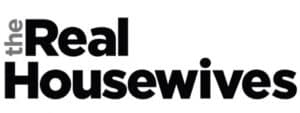
The Nose Craze
Rhinoplasty was a big hit among the Real Housewives in 2021. Teresa Giudice and Raquel Leviss—to name two—both had rhinoplasty procedures. Many patients feel their nose detracts from other facial features and choose rhinoplasty to adjust the shape or size to fit harmoniously with the rest of their facial features.
Rhinoplasty is a complex procedure that requires a skilled and experienced surgeon, as well as extensive preoperative discussions and planning. Dr. Miller considers facial structure, the prominence of features, and skin quality and thickness when advising patients on how to achieve their cosmetic goals and overall facial balance.
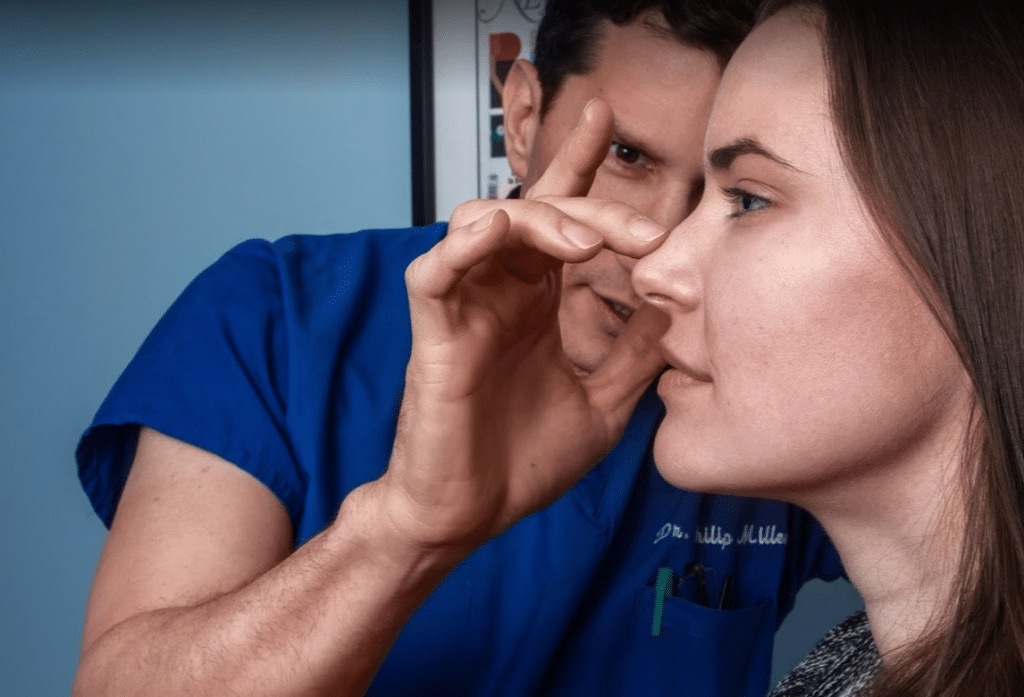
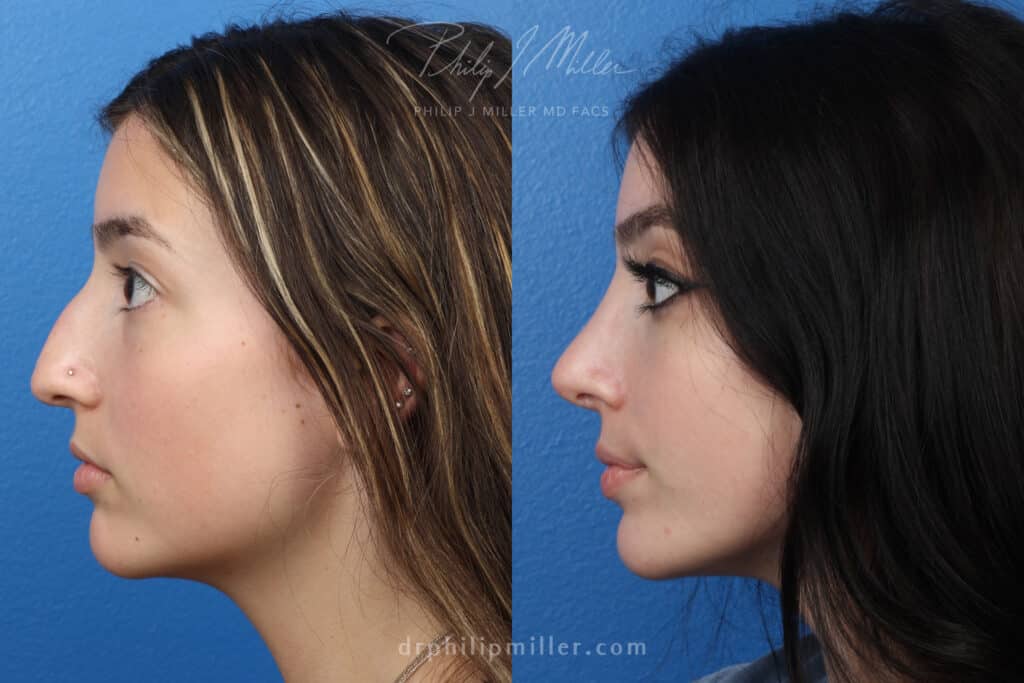
In the case of Real Housewife Raquel Leviss, she felt disappointed with her results and thought her fiancé bumping into her nose may have contributed to unwanted results. While finding an expert surgeon is important, sometimes results can be different from what a patient envisioned. Dr. Miller offers revision rhinoplasty for patients disappointed in results, or that suffered a nose injury or trauma after the initial procedure.
Rhinoplasty can tackle a small problem area or completely reshape or resize your nose. Teresa Giudice felt her nose was too round on the top and turned to rhinoplasty to feel more confident. Whatever the reason, whatever the concern, Dr. Miller can work with you to find a solution and create natural, beautiful results for you.
Combining Procedures
Many plastic surgery combinations are safe and provide maximum results. By combining procedures, patients can reduce recovery time, limit the use of anesthetics, and eliminate multiple surgeries. Some procedures make sense to perform together, such as a facelift and fillers, or chin augmentation and rhinoplasty.
Combination procedures have been popular with many of the Real Housewives, as the convenience of scheduling multiple treatments at one time can save both time and money.
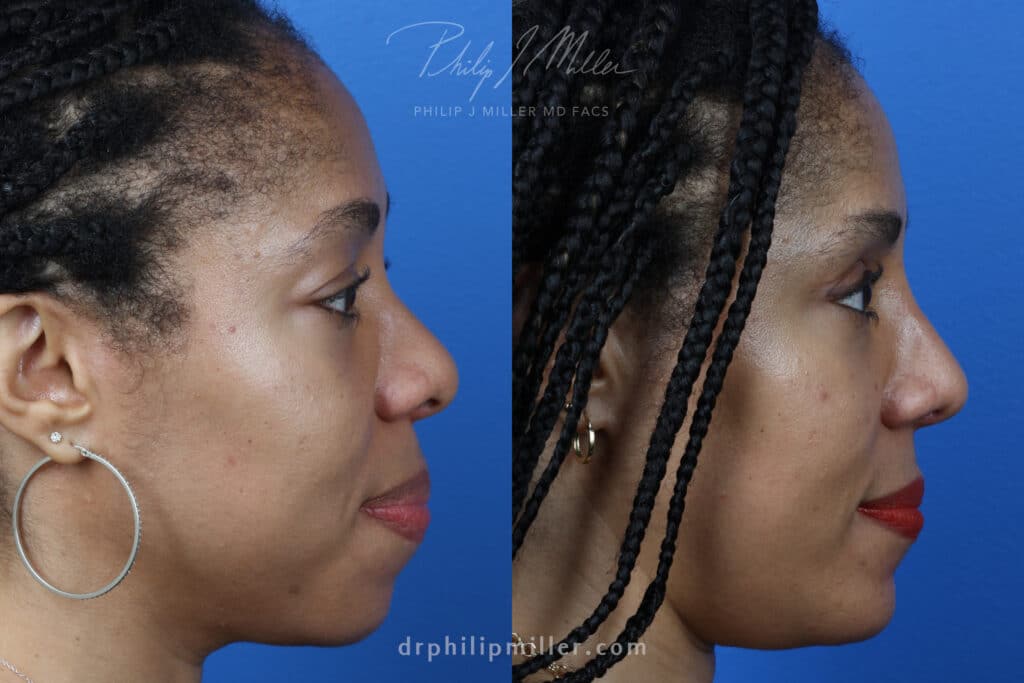
Dr. Miller works closely with patients to identify their cosmetic goals and create a custom plan with combination treatments to meet those goals quickly and efficiently. Like Jennifer’s case, sometimes balance can only be achieved when multiple areas are addressed with different procedures. Seeing satisfying results from combination procedures can boost your confidence and comfort.
Getting a Lift
Facelifts—and other major plastic surgeries—are most common in the fall and winter to avoid heat and sun exposure and see results before summer months or holiday events. A facelift is a popular procedure that tightens sagging skin from aging and weak muscles. Loose skin can be moved or removed to create a natural look and a more youthful appearance.
Dolores Catania and Emily Simpson are two Real Housewives that have undergone a facelift. There are different types of facelifts that produce various levels of results. Emily had a mini lower facelift which is less invasive and targets more minor areas of wrinkles or loose skin. Dr. Miller offers different types of facelifts in his Manhattan office, including:
- Traditional Facelift: Incisions are made at the hairline, continue in front and behind the ears, and extend to the lower scalp. Muscles and skin are lifted and tightened, and closed with sutures.
- Mini Facelift: This procedure uses shorter incisions and targets areas that are just beginning to wrinkle or sag. This minor outpatient treatment can be accomplished in less than 90 minutes.
- Thread Lift: A unique thread with tiny barbs is used to pull the skin up and back. This thread latches onto the skin and remains in place to keep the skin smooth.
- Micro Lift: This minimally invasive procedure creates the look one achieves with pulled-back hair. It is a quick and safe procedure with little downtime.
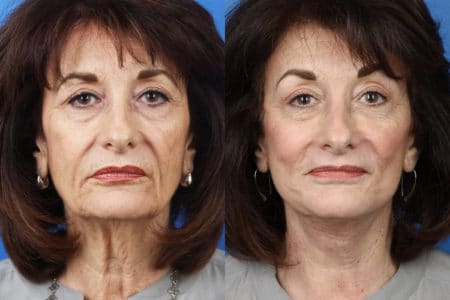
Fast and Fabulous
Dermal fillers and Botox ® Cosmetic are popular, especially among Real Housewives. Botox treats frown lines and other dynamic wrinkles by blocking nerve impulses to facial muscles, while dermal fillers target static wrinkles and restore youthful volume. Knowing the right product, treatment area, and limit is key to achieving your best possible results.
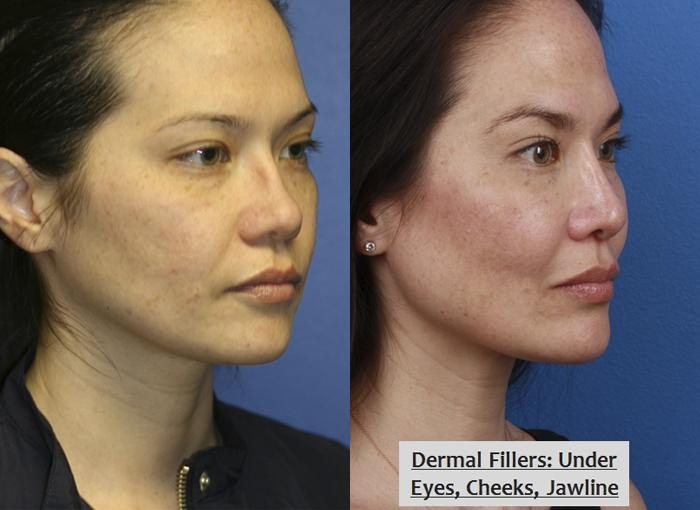
Real Housewife Shannon Storms Beador admitted to overdoing it on fillers. When too many facial fillers are used, it can dramatically alter an appearance and create disproportionate features and an unnatural look. Dr. Miller uses the unique NatraLook® approach to aesthetic beauty. The NatraLook process empowers individuals to explore aesthetic confidence safely and naturally. Dr. Miller and his team strive for natural-looking results to provide patients with an extraordinary experience.
Dr. Miller can suggest which Botox and filler treatments are right for you to create the customized approach that produces the most natural improvement.
Your Best Choice for Facial Plastic Surgery in New York City
Many plastic surgery procedures help you look and feel your best. Whether you want a single treatment, combination procedure, or a total makeover, Dr. Miller can help you achieve your aesthetic goals. NYC #1 facial plastic surgeon, Dr. Miller, uses minimally-invasive techniques, innovative technology, and advanced surgical methods to help patients boost their confidence and achieve their aesthetic goals.
Contact us today to learn more about our procedures and schedule a consultation.
What is Dorsal Reduction?
Dorsal reduction rhinoplasty surgery is a procedure that removes excess cartilage and bone from the nose, refining its appearance and improving its proportion to the rest of the face.
Philip J. Miller, MD, FACS, a double board-certified facial plastic surgeon in Manhattan, New York, and one of the country’s foremost experts in rhinoplasty, can assist female and male patients alike in achieving a nose they’ll love. You may elect traditional dorsal reduction rhinoplasty to reshape or reduce the nose. Other patients may benefit from non-surgical rhinoplasty for subtle corrections that achieve their desired aesthetic goals.
What is dorsal reduction?
Dorsal reduction rhinoplasty is a surgery that removes excess cartilage, bone, and skin from the nose, giving it a straighter, more streamlined look. This can help enhance the appearance, create facial symmetry, and improve breathing through the nose by reducing nasal obstruction or deviation.
The procedure can make the bridge of the nose narrower and straighter, and is often performed on patients whose noses are too large for their facial features or who have noses with an unusual shape. Dorsal reduction is often performed on people with prominent noses, such as those of Italian or Greek heritage.
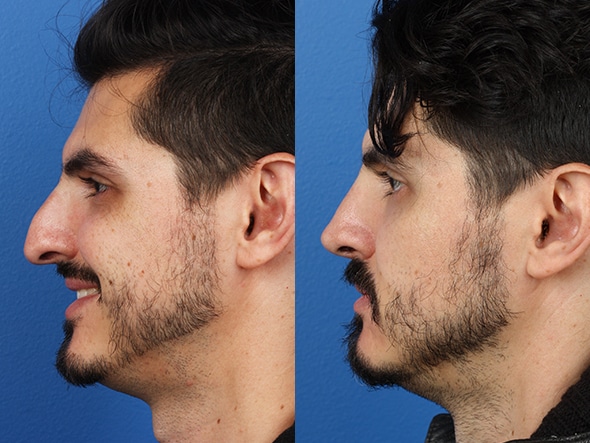
What causes a dorsal hump?
A dorsal hump appears on the slope of the nose from the bridge to the tip and can affect your facial profile. A dorsal hump is most noticeable when viewed from the side of the face.
The majority of dorsal humps are inherited genetically. As a result, if your parents or siblings have a prominent dorsal hump, you may as well. Dorsal humps may occur due to a traumatic physical injury—such as a sports injury or car accident—if the bone or cartilage heals unevenly. Whatever the cause of a dorsal hump, Philip Miller, MD, FACS in Manhattan can correct it and give you an aesthetically pleasing, balanced profile.
Benefits of Dorsal Reduction
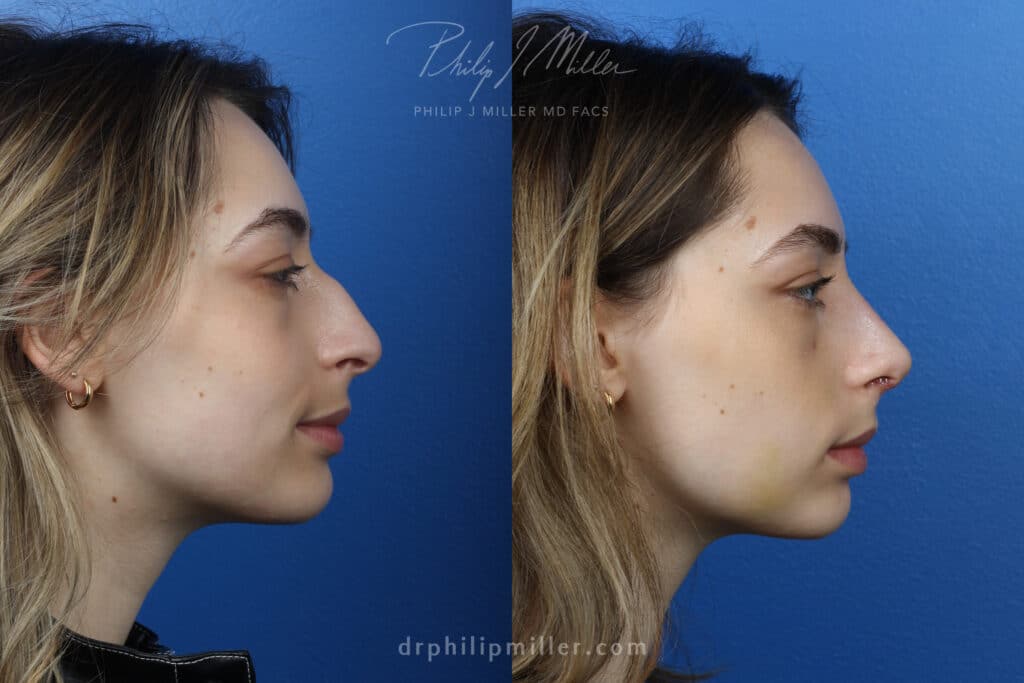
The benefits of dorsal reduction rhinoplasty include improved self-confidence and a positive self-image. However, since dorsal humps are often the result of genetic heritage, the procedure may cause identity issues for some ethnic patients. This is why it is so important to rely on an expert surgeon’s skills to achieve the goals of an ethnic nose job without affecting other ethnicity-related facial features.
How is dorsal reduction performed?
Open Rhinoplasty. During an open rhinoplasty, the surgeon makes a small Z-shaped incision between the nostrils on the underside of the nose. The open approach enables the surgeon to make more precise and accurate adjustments to your nose’s shape. Although open rhinoplasty leaves a small scar, it fades quickly with proper care.
Closed Rhinoplasty. Closed rhinoplasty is a procedure in which the surgeon makes incisions inside the nose without affecting the skin. The primary disadvantage of this approach is that the bone, cartilage, and tissue are not visible to the surgeon. However, this procedure results in less swelling than open rhinoplasty and can correct minor flaws.
MicroRhinoplasty. During a MicroRhinoplasty procedure, Dr.Miller accesses the treatment area via a small incision in the nostril. Then, using a specialized microrasp, he meticulously removes the protruding bony layers until the desired contour is achieved. Patients experience minimal discomfort, swelling, and bruising and typically resume normal activities within a few days.
Liquid Rhinoplasty. A liquid—or nonsurgical—rhinoplasty uses dermal fillers to reshape the nose without stitches or incisions. While liquid filler can’t make a nose appear smaller, it can correct minor indentations or asymmetries without requiring surgical intervention.
Recovery After Dorsal Reduction
Most patients are pleasantly surprised by how little pain they experience following dorsal reduction rhinoplasty surgery. The most unpleasant aspect of postoperative recovery is difficulty breathing through the nose for several days because of swelling. This difficulty usually resolves within a week or two. Expect some swelling around your eyes for several weeks. Once the swelling diminishes, you’ll start to see improvement.
You’ll need to follow certain precautions during your recovery period. Because bending or lifting can exacerbate swelling, it’s not recommended for the first three weeks following surgery. No strenuous activity such as running, weight lifting, cycling, or cardio training should be resumed for three weeks. Contact sports should be avoided for six weeks to allow the bones to heal completely. You may drive once the swelling has subsided sufficiently to allow for clear vision. Air travel is permitted 2-3 weeks after your surgery.
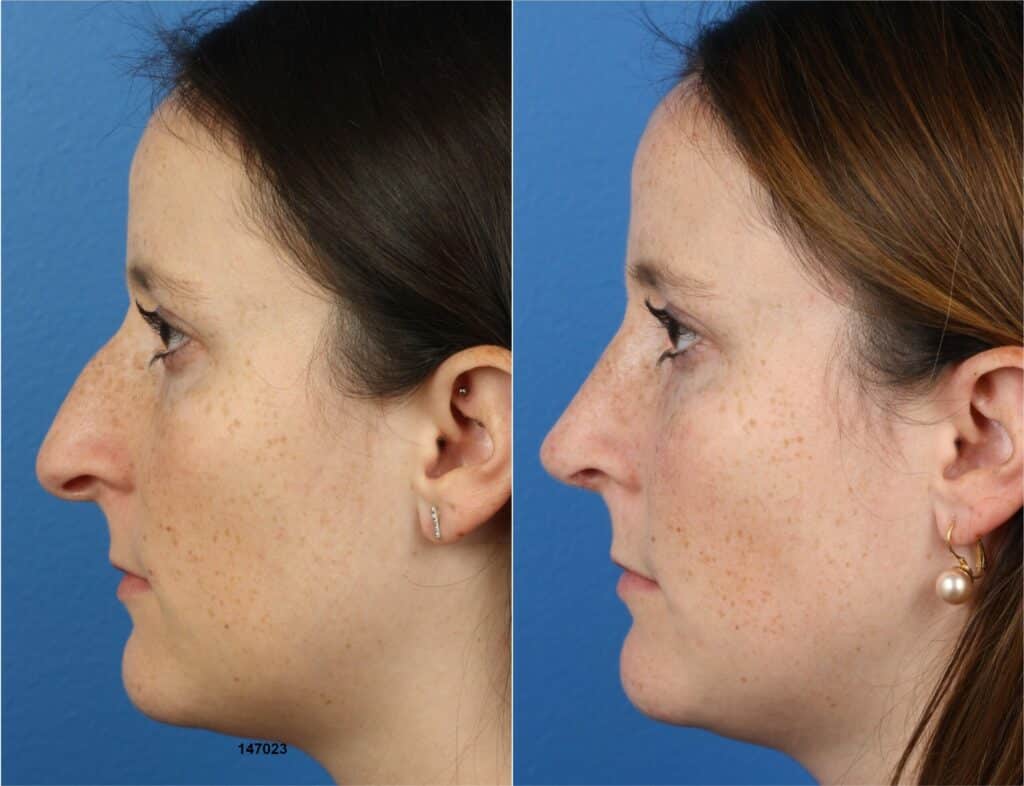
Scarring After Dorsal Reduction
The size and location of scars will depend on how extensive your treatment is because dorsal reduction involves removing sections of bone, cartilage, and skin tissue.
Scars from this procedure are typically hidden within the nasal skin creases and won’t be visible when you look straight ahead. Many patients choose topical treatments to minimize scarring.
Is Dorsal Reduction Right for You? Ask the Expert

Why should you consult with Dr. Miller about your dorsal reduction procedure?
- Dr. Miller has over two decades of experience in facial plastic surgery.
- He has performed over 5,000 successful procedures.
- He is a facial plastic surgeon of international renown.
- He blends art and science to provide his patients with beautiful, natural-looking results.
In addition to these qualifications, Dr. Miller offers his patients the exclusive NatraLook process, which combines minimally invasive techniques and advanced procedures to help each patient achieve the Aesthetic Confidence® they desire.
Schedule a Dorsal Reduction Consultation in New York
To learn more about dorsal reduction rhinoplasty in Manhattan, contact our office to set up a consultation with Dr. Miller, #1 NYC facial plastic surgeon. You can fill out our convenient contact form or call us. One of our patient advisers will be happy to help you start the journey to a new, improved you.
5 Clues You Might Need Revision Rhinoplasty
Problems with your rhinoplasty procedure? Not happy with the results? Don’t lose hope—you can still achieve the look and functionality you want with revision rhinoplasty. Revision rhinoplasty is a surgical procedure to correct undesirable outcomes or treat persistent issues the original surgery did not address.
Philip Miller MD, FACS, a double board-certified facial plastic and reconstructive surgeon, can perform successful rhinoplasty and revision rhinoplasty procedures in Manhattan, New York. Dr. Miller has more than two decades of experience performing surgical and non-surgical procedures and can help you reach aesthetic confidence with revision rhinoplasty.
Why is revision rhinoplasty so common?
Revision procedures are common because the initial rhinoplasty is one of the most complex of all plastic surgery procedures. Some plastic surgeons do not have the skills, experience, and training to perform this procedure well, leading to botched surgeries and undesirable results.
The nose contains thin cartilage that requires expert handling to achieve successful cosmetic or functional outcomes. A study from the Aesthetic Surgery Journal found the average rate for revision rhinoplasty to be nearly 10%. Other factors that include increased revision rhinoplasty rates include:
- Outdated techniques or equipment
- Lack of doctor-patient communication
- Complications that impact the healing process and results
There are several common indicators that revision rhinoplasty may work for you. Take a look:
Clue #1: Your Nose is Not Symmetrical
Many patients feel their nose looks asymmetrical after rhinoplasty and that it was not adequately shaped. A poorly performed rhinoplasty procedure can result in a nose that appears uneven, disproportionate, or even off-center. Revision rhinoplasty can create a more natural, even look to compliment your entire facial structure.
After completely healing from rhinoplasty, you can assess the symmetry of your nose, and if you are unsatisfied, revision rhinoplasty may be right for you.
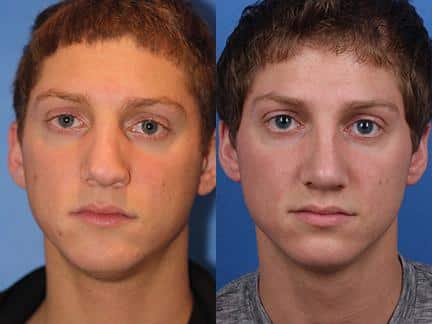
Clue #2: Your Results don’t Look Natural
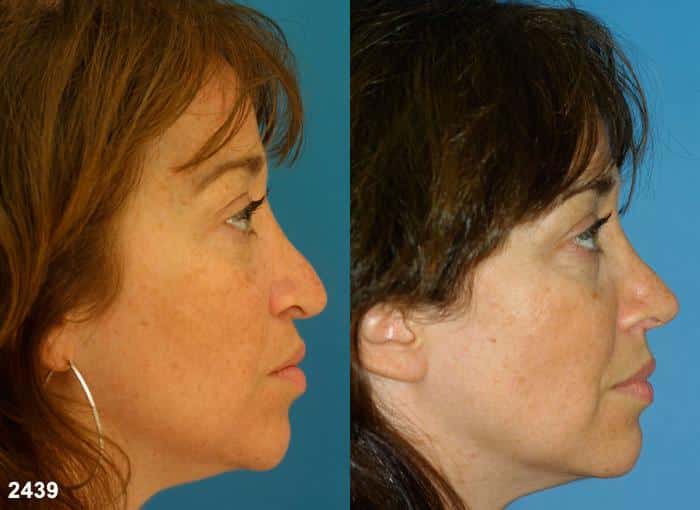
An initial rhinoplasty procedure may have removed too much or too little tissue and can lead to an unnatural nose shape. It can also cause a build-up of scar tissue that needs to be surgically removed. Unnatural-looking noses can be resolved with revision surgery. Potential unnatural-looking results include:
- Pinched Tip: A frequent complaint where the end of the nose appears compressed and leads to unwanted aesthetics and impaired breathing. This occurs when too much cartilage is removed from the tip of the nose, diminishing support over time.
- Short Nose: Just as it sounds, a nose can appear short and stubby due to the removal of too much cartilage. Specialized grafts act as support and restore a longer, more natural-looking shape.
- Crooked Nose: Typically derived from nasal trauma or a result of an initial rhinoplasty, a crooked or twisted nose is uneven and unnatural. Revision can rearrange the cartilage and bone to create a symmetrical, pleasing look.
Dr. Miller utilizes the NatraLook® Process to ensure the most natural and pleasing results. The NatraLook Process is critical to achieving a unified vision and executing intended results. Evaluating the entire face and how features relate to each other, as well as skin quality and thickness, all play a part in creating a beautiful, natural look.
While an unsatisfactory rhinoplasty can be very upsetting to a patient who has invested time and money into the process, many issues can be resolved with revision rhinoplasty. Dr. Miller performs revision procedures in his Manhattan, New York office to restore your confidence and achieve a natural look.
Clue #3: You are Disappointed in Your Results
If doctor-patient communication was lacking, or the procedure did not go as planned, many patients can feel disappointed in the results. Skill and experience are not the same. Surgeons may know how to do some nose shapes and resizing but may not have as much experience with a broader range of requests and or techniques. Your nose should be proportional and harmonious with other facial features, which means rhinoplasty is not a one-size-fits-all endeavor.
Even if the shape is ideal, patients may find other imperfections that cause dissatisfaction. Revision rhinoplasty can refine subtle areas such as:
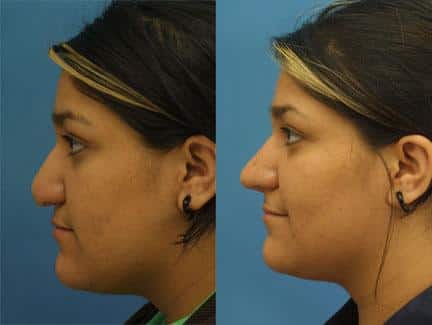
- Narrowing the nostrils
- Lifting the nasal tip
- Thinning or lifting the tissue that separates the nostrils
- Smoothing bumps on the surface of the nose
Revision rhinoplasty is a solution for major or minor alterations so that you feel good about your look. Dr. Miller uses his years of expertise to create patient-centric plans that result in stunning aesthetics to satisfy individual beauty goals.
Clue #4: Your Nose isn’t Working Properly
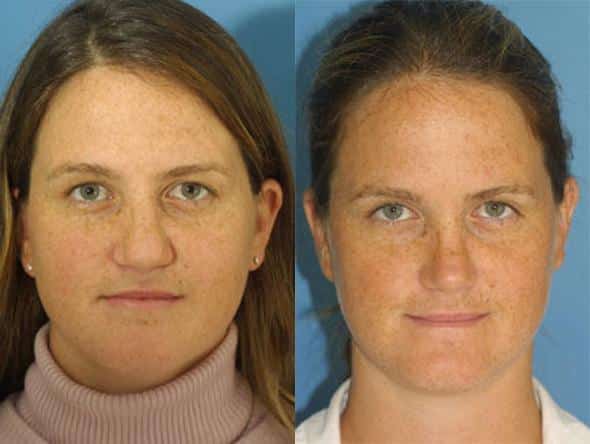
Not only should your nose look amazing, but it should also function properly. Improper nose function can be due to rhinoplasty surgery that does not heal properly or a functional issue that was not resolved or was created from a rhinoplasty procedure. The nose is a significant structure that impacts breathing and sinus issues. Revision rhinoplasty can help you get your dream nose and optimize function to reduce or eliminate problems that can interfere with breathing and sleep.
Clue #5: An Injury Occurred Since Your First Surgery
Rhinoplasty is a superior choice for nose shaping and sizing, but it does not make your nose invincible. The nose is still susceptible to injury and trauma, especially within a year or two after surgery. Due to the restructuring of cartilage and tissue, the nose can often be more fragile. If you endure an injury or trauma to the nose, it can be repaired through revision rhinoplasty. Dr. Miller works closely with Manhattan patients to ensure cosmetic and functional concerns are addressed when trauma or injury has occurred.
How Long Should You Wait for Revision Rhinoplasty?
Healing varies by individual, but most surgeons request patients wait 12-18 months before undergoing secondary rhinoplasty surgery. The healing process is long and crucial for the nose to take its final form or function. The duration of swelling varies by patient and can cause the nose to look different than it will when completely healed. Rushing into a revision surgery is dangerous and can cause unnatural and unsatisfactory results.
Choosing Your Revision Rhinoplasty Surgeon
Plastic surgery is not a guaranteed process, but choosing an expert surgeon with years of experience and developed skills can positively impact results. Do not assume all plastic surgeons are the same—research a surgeon and their practice before committing, and do not be afraid to ask hard questions. A consultation is a time to learn more about the procedure, a surgeon’s credentials, and experience.
Dr. Miller is a highly reputable, double board-certified plastic surgeon with more than two decades of experience in cosmetic medicine. With his expert team, Dr. Miller has a high success rate of facial surgery procedures and has been voted among the Best Doctors in America for the past 10 years and Top Doctor of New York City. He uses innovative techniques for rhinoplasty and revision rhinoplasty that helps patients achieve their desired look and function.
Contact us today online or by calling 646-791-3025 to see if revision rhinoplasty is right for you.
5 Reasons Winter is the Perfect Time for a Facelift in NYC
Winter is the perfect time for a facelift. It’s easier to avoid the sun, which aids the healing process. Bandages can be more easily hidden under layered winter clothing. When warm weather arrives, and social activities pick up, you’ll face the world fully healed and looking and feeling your best.
You can maintain a youthful appearance as you age. A facelift procedure performed by double board-certified New York facial plastic surgeon Philip J. Miller, MD, FACS, can reverse the appearance of wrinkles, sagging skin, and other undesirable effects of time and gravity. Check out these five reasons why now might be the best time to start the facelift process with Dr. Miller.
Less Sun and More Time Indoors for Safer, More Comfortable Healing
With the sun safely hidden behind clouds and cooler temperatures preventing you from spending much time outdoors, avoiding the sun is easier this time of year. Warmer temperatures can exacerbate tissue inflammation, which means that winter’s cold weather may actually be beneficial for healing following a facelift. Sun exposure can affect incisions, creating more visible scarring. Take advantage of the cloudy winter weather to heal from your procedure.
Cold Weather Makes it Easier to Stay Home
After a surgical facelift, your surgeon is likely to recommend minimal physical activity for a period of time. If you’re like many people, you tend to stay home more often when winter hits anyway, so the downtime needed for recovery will be more manageable.
Give in to the urge to “hibernate” after your facelift surgery. You’ll get the most out of the active warm weather months if you carve out the time to take care of yourself and fully recover from your procedure now while the weather is cold.
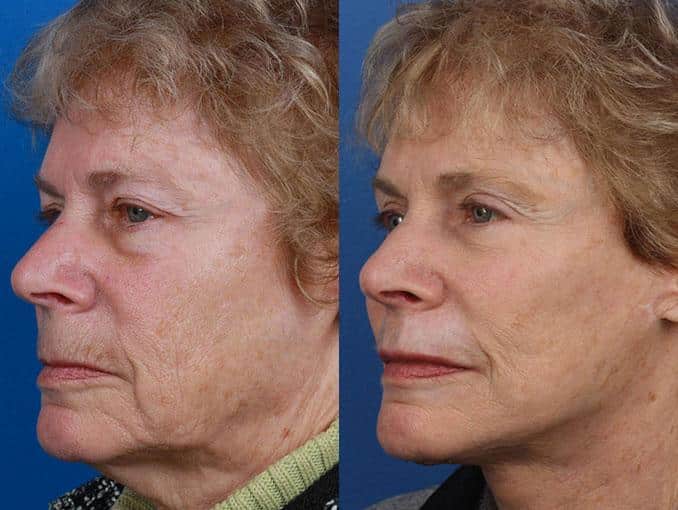
Fewer Special Events and Socializing Makes Downtime More Convenient
You may want to avoid your social circle while you heal from facelift surgery. Winter is generally a less active time socially, and unless you’re a winter sports enthusiast, your vacation plans probably don’t involve cold temperatures or snow.
Most people schedule their big events for the summer. June through September is typically peak wedding season, and you’ll probably be invited to summer gatherings and parties around Memorial Day, July 4th, and Labor Day. You’ll want to be fully recovered and looking your best by the time these special events arrive.
You’ll be Ready for Socializing When the Temperatures Warm Up
The summer season is often a time for vacations, weddings, and reunions. Be sure you’re ready to face all of life’s upcoming events by addressing any cosmetic concerns you may have now.
While the majority of patients return to work and other activities within 2-3 weeks of plastic surgery, the results of your procedure may take much longer to become fully apparent. Scheduling your procedure as soon as possible will allow your body adequate time to recover from swelling, bruising, and any other surgery-related side effects before you hit the summer social scene. You will be ready to face the upcoming warm weather looking and feeling your absolute best.
Why Dr. Miller is the Top Choice for Facelifts in NYC
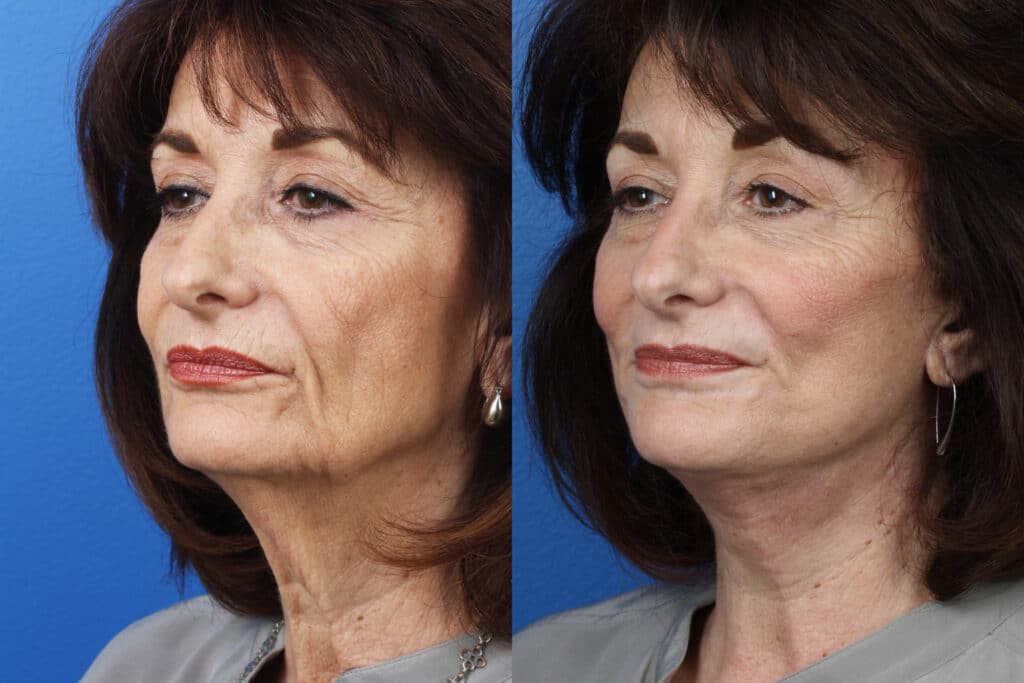
Dr. Miller is an expert plastic surgeon specializing in cosmetic facial surgeries, including the classic facelift. Together, you’ll create a custom treatment plan to address your concerns and achieve your goals.
Dr. Miller offers several different options for facelifts in his Manhattan practice: a traditional facelift, a micro lift, and his exclusive, non-surgical Miller Lift. During your consultation, Dr. Miller will discuss the differences between the procedures and the benefits of each, so you’ll be able to make an informed decision about which option is best for you.
Procedures such as eyelid surgery or rhinoplasty (a nose job) can further enhance your appearance. Laser skin resurfacing, a minimally invasive procedure, can be an excellent complement to a facelift, adding to your rejuvenated, youthful look.
To ensure every patient achieves their desired results, Dr. Miller offers the proprietary NatraLook® Experience. This collaborative process allows you to create a unified vision of your expected results with Dr. Miller before your procedure, enhancing your Aesthetic Confidence™.
Dr. Miller’s exclusive NatraFace™ approach addresses both restorative and transformative changes by treating sagging skin, replacing lost volume, and revitalizing the skin, as well as modifying and improving the size or shape of any unfavorable facial features.
Plan Your Winter Facelift Procedure Today
If you’ve been considering a facelift to rejuvenate your appearance, don’t put it off any longer. Schedule your consultation now, and use this winter season to relax and recover from your procedure.
You can schedule a consultation with Dr. Miller by contacting his Manhattan, NY plastic surgery clinic today.
5 Ways to Make 2022 Your Most Beautiful Year Yet
Feeling down about your appearance after 2021? Dr. Philip Miller can help you achieve all your cosmetic and plastic surgery goals to make 2022 your most beautiful year yet. From plastic surgery to minimally-invasive procedures, our expert team at our Manhattan, New York location can discuss treatment options in our state-of-the-art facility.
Dr. Philip Miller is a double board-certified facial plastic surgeon that uses minimally-invasive techniques, innovative technology, and advanced surgical procedures to help each patient become the very best version of themselves.
Dr. Miller and his team of top-rated experts use the unique NatraLook approach to aesthetic beauty. The NatraLook process transforms the typical plastic surgery experience into a safe and empowering opportunity to explore your aesthetic confidence. Dr. Miller and his team utilize this unique approach, combined with years of practice, to provide an extraordinary patient experience and superior cosmetic results.
Take advantage of Dr. Miller’s expertise and innovative treatments in 2022. We can help you address nagging concerns that are getting in the way of your self-confidence to make this year your best yet.
Turn Back Time with a Facelift
Facelifts are a popular plastic surgery procedure in New York to tighten skin that has naturally started sagging due to weakened tissue and muscle. A traditional facelift focuses on the lower portion of the face, jawline, and jowls. Tissue known as a superficial musculoaponeurotic system (SMAS) can be lifted and tightened, and loose skin can be removed or redistributed to create a more youthful facial contour.
Don’t let sagging skin bring you down; you can alter your skin with a facelift to feel more comfortable and confident in your look. A facelift provides long-lasting and natural-looking results for a more youthful look. It can:
- Define the jawline
- Improve facial contour
- Diminish the appearance of lines and wrinkles around the nose and mouth
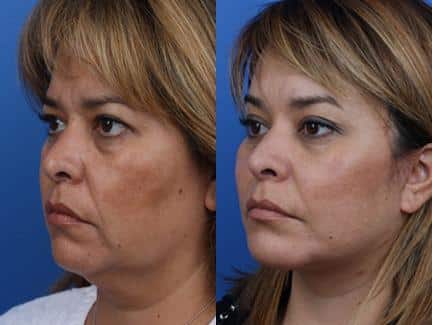
Dr. Miller offers different types of facelifts at his Manhattan office, including:
- Traditional Facelift: Incisions are made at the hairline, continue in front and behind the ears, and extend to the lower scalp. Muscles and skin are lifted and tightened, and closed with sutures.This is the most extensive facelift procedure, which also produces the most dramatic results – often shaving as many as 10 years off the appearance.
- Mini Facelift: This procedure uses shorter incisions and targets areas that are just beginning to wrinkle or sag. This minor outpatient treatment can be accomplished in less than 90 minutes. Results are not as dramatic and usually last 5-7 years.
- Thread Lift: A unique thread with tiny barbs is used to pull the skin up and back. This thread latches onto the skin and remains in place to keep the skin smooth. The result is a firmer, lifted look that can last up to one year or longer.
- Micro Lift: This minimally invasive procedure creates the look of tightened hair one achieves with pulled-back hair. It is a quick and safe procedure that provides facial refreshment with little downtime.
Dr. Miller will discuss your facelift options in-depth and walk you through the process to achieve a customized, refreshed look for 2022.
Achieve Facial Harmony with Rhinoplasty
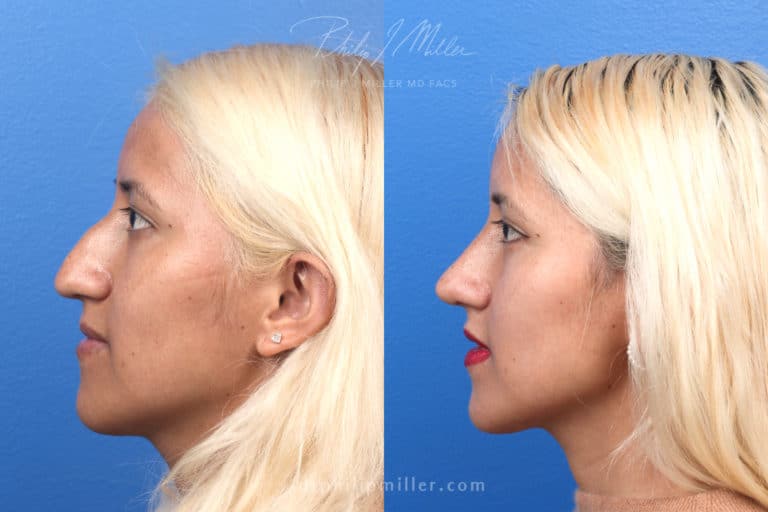
Changing the shape of your entire nose, or even just a part of it to make it more harmonious with your face, requires an expert surgeon. Rhinoplasty, more commonly referred to as a “nose job,” can change the shape of your nose to create a balanced look or improve breathing issues from a deviated septum. It is a common procedure but one of the most complex operations to perform.
Dr. Miller can address cosmetic concerns you have about your nose to feel more confident in your appearance. He will spend ample time discussing your issues and goals so he can create a customized procedure plan for you. Considerations to achieve facial balance include:
- The prominence of your cheeks and jawline
- Skin thickness and quality
- Overall dimensions of your nose
Take the leap and schedule your rhinoplasty consultation with Dr. Miller today.
Chin Up with Our Proprietary Jawline Contouring
While plastic surgery and cosmetic procedures are mainly thought to benefit women, men can also enjoy aesthetic improvements with procedures designed just for them. The proprietary G.I. Jaw procedure—jawline contouring—was invented by Dr. Philip Miller to enhance the jawline and chin to create a chiseled appearance, particularly for his male patients.
The procedure creates the classic look men desire—a sharp, square chin and strong jawline. According to the American Society of Plastic Surgeons, 54% of all chin and jaw contouring procedures are performed on men. Under the care of Dr. Miller in NYC, you can achieve an ideal jawline and facial shape without surgery. The G.I. procedure improves:
- Facial symmetry
- A recessed chin
- A weak jawline
- Cheekbones that lack definition
Women and men can make 2022 their most beautiful and confident year yet.
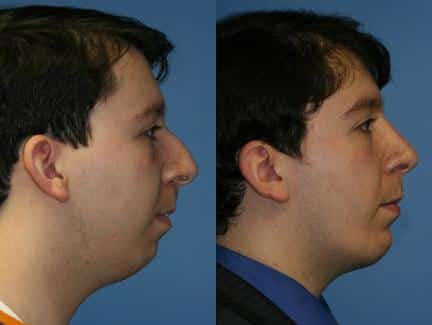
Combine Treatments for Dramatic Improvement
Many plastic surgery combinations are safe and provide additional benefits by completing multiple surgeries at one time. By combining procedures, patients can reduce recovery time, achieve maximum results, and limit their use of anesthetics.
Some safe combinations include:
- Facelift and eyelid surgery
- Facelift and brow or neck lift
- Eyelid surgery and dermal fillers
- Chin or jaw augmentation and rhinoplasty
Dr. Miller can advise you on which procedures to combine to meet your goals quickly and efficiently. Feeling beautiful and confident doesn’t have to take a lot of time; it just takes some help from Dr. Miller and his team to create the customized plan that meets your needs and goals best.
Enjoy a Quick Fix with Our Injectable Treatments
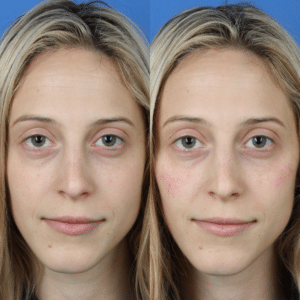
Dermal fillers are a popular minimally-invasive treatment to reduce visible facial lines and restore volume. They can also:
- Plump lips
- Enhance face shape and eliminate shallow contours
- Fill and smooth lines, wrinkles, and deep folds on the face
- Improve the appearance of scars
Dermal fillers help reduce signs of aging and give you a fresh look. They are a simple treatment that makes an impact as a stand-alone procedure or as part of a full facial rejuvenation plan.
There are many treatment options to help you feel your best in 2022. Whether you’re looking for a complete cosmetic makeover, or a little pick-me-up, Dr. Miller and his team of expert plastic surgeons in Manhattan, New York, can help you choose the right treatments to feel beautiful in the new year.
Contact us today to schedule your consultation and learn more about our advanced treatment options for younger, healthier-looking skin.